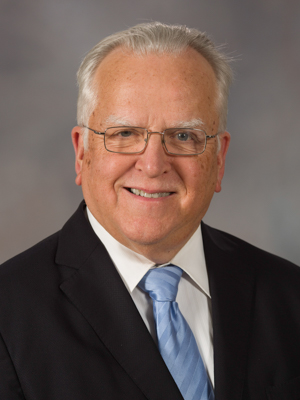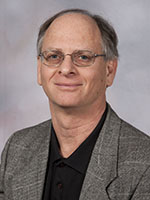ACS: Modifying risk factors key to reducing cancer deaths
Note: This story appears in the November 2018 edition of CONSULT, the monthly e-newsletter published by the UMMC Division of Public Affairs that focuses on cutting-edge clinical advances, innovative educational programs and groundbreaking research occurring at UMMC. To receive CONSULT in your email, visit www.umc.edu/CONSULT to sign up.
If all U.S. residents worked to reduce their risk of cancer, deaths from the disease would lower significantly, a recent review of cancer data by the American Cancer Society shows.
The ACS quotes one study that estimates 42 percent of all cancers diagnosed and 45 percent of cancer deaths in 2014 in people 30 or older could be attributed to risk factors individuals can modify.
Tobacco use sits at the top of the list.
According to the ACS review, “Tobacco use remains the leading cause of cancer, cardiovascular disease and noncommunicable diseases worldwide.” Tobacco use is strongly linked to lung cancers but also is a risk factor in up to 30 other types of cancer.

“Lung cancer is the most lethal disease we have,” said Dr. John Ruckdeschel, University of Mississippi Medical Center Cancer Institute director. “It’s diagnosed slightly less than breast cancer in women and prostate cancer in men, but it kills more patients than the next five most common cancers put together.”
Another factor the ACS cites is using available screening to find cancer early before it metastasizes. Today, a low dose computed tomography scan, LDCT for short, offers hope of catching lung cancer early when chances of successful treatment are higher.
“Until LDCT lung screening we have not had an intervention that could reduce deaths from lung cancer to this degree since the invention of ether and our ability to do surgery on patients,” said Ruckdeschel, professor of medicine and a leading authority on lung cancers. “Anyone who has smoked more than 30 pack years, we need them to get screened.
“The U.S. trial of LDCT showed a 20 percent reduction in lung cancer mortality and the recently completed European study showed a 26 percent mortality reduction for men and a 60 percent reduction for women,” he said.
Today, physicians need to identify current and past heavy smokers and schedule a LDCT.
“At the same time, we want them to stop smoking and for their families to stop smoking,” Ruckdeschel said.

Dr. Thomas Payne, professor of otolaryngology and communicative sciences who heads the UMMC Cancer Institute’s smoking cessation program, said providing help quitting tobacco using proven methods is a well-established and effective approach.
The ACT Center for Tobacco Treatment, Education and Research has been in the forefront of providing counseling and medication to help people leave tobacco behind.
The combination substantially reduces tobacco withdrawal symptoms, improves awareness of triggers that drive tobacco use and helps people develop strategies to effectively manage difficult situations.
“We have the services here, but they are grossly underutilized,” Ruckdeschel said.
The Interdisciplinary Thoracic (Lung) Cancer Team, for whom Ruckdeschel serves as an oncologist, now tries to identify members of a patient’s family who are smoking and immediately have them meet with an ACT counselor and, when appropriate, encourage an LDCT.
“We want to catch the family member or friend while they are motivated to quit,” he said.
Quitting tobacco also can lower a person’s risk for multiple heart and lung diseases and many other illnesses.
Another growing question involves the use of electronic cigarettes and vaping products, said Payne, a member of the UMMC Cancer Institute Cancer Control, Epidemiology and Disparities Research Program. These products haven’t been on the market long enough to gauge long-term effects, but many contain chemicals that have been linked to cancer. The ACS review flags the products as needing thorough review and cautions that using them may be harmful.
Payne’s biggest fear?
“They are a big attraction to kids,” he said. “We were making great progress in reducing tobacco use in high schools. Now that’s being somewhat reversed by these products.”
While many electronic products, including vaping, are seen by some as a way to quit using tobacco, most available research indicates it may reduce a person’s efforts to quit, or become a gateway to more traditional tobacco use.
Along with its focus on smoking, the ACS also cited these behaviors that could lower a person’s risk of cancer:
* Alcohol consumption. This is linked to several oral cancers and liver and colorectal cancer. The ACS recommends not drinking or, for those who do drink, limiting intake to one drink per day for women and two for men.
* Excess weight. Obesity is linked to several cancers, with 7.8 percent of cancers linked to body fat in 2014, second only to smoking.
* Dietary factors. Major cancer organizations recommend five servings of fruits and vegetables per day, choosing whole grains, and limiting consumption of red meat and processed meat.
* Physical activity. Some studies show the recommended 150 minutes per week of moderate to heavy exercise helps reduce the risk for colon and breast cancer. Some studies also suggest moderate exercise may reduce the risk for postmenopausal breast cancer; endometrial cancers; kidney, bladder and stomach cancers; and some types of esophageal cancers.
* Tanning. Tanning outdoors or in tanning beds is heavily associated with higher risks for all types of skin cancer, including melanoma, the most deadly. The ACS recommends limiting sun exposure and avoiding indoor tanning.
* Infectious agents. Scientists have identified several pathogens, viruses and parasites that can raise the risk of different cancers. Improvements in sanitation, increased screening and use of preventative agents, like the HPV vaccination, can help lower cancer risks. Getting the HPV vaccine can help reduce deaths from cervical, anal, vaginal, penile and oropharyngeal cancers. The ACS recommends women and men be vaccinated at the appropriate time.
* Medical Ionizing Radiation and Radon. This includes naturally occurring sources of radiation and man-made ones, such as X-rays. As a result, several radiology groups began a campaign in 2010 to reduce exposure among adult and pediatric patients. Radon, a radioactive gas formed in rocks and soil, can increase the risk for lung cancer. The U.S. Environmental Protection Agency recommends testing homes for radon.
For more information about LDCT or to schedule a screening, call (601) 984-LUNG (5864). For more information about quitting tobacco, call the ACT Center at (601) 815-1180.
To see the full ACS report, visit https://onlinelibrary.wiley.com/doi/full/10.3322/caac.21496. To find out about screenings, visit https://www.umc.edu/Healthcare/Cancer/Cancer_Screening/Cancer%20Screenings.html.



